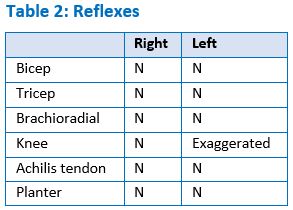Management of Pakshaghata in Ayurveda - A Case Study
Keywords:
Pakshaghat, Vata Vyadhi, Ayurveda, Panchakarma, hemiplegiaAbstract
Pakshaghat is made up of two words Paksha (half part of body) and Aghat (loss of function). Ayurved literature is full of textual references where Pakshaghat is described extensively. It is considered as Vata Dosha predominant Vyadhi. Patient usually presents with loss of function of a half of body or weakness of one half. Face may or may not be involved. Prognosis depends on many factors including Vaya, Bala, Dosha involvement etc. In modern science all the motor activities are controlled by brain. Cerebrovascular accidents are mainly responsible for loss of function in body and due to maximal similarity they can be correlated with Pakshaghat. In modern science there is usually treatment of symptoms but when it comes to Ayurveda there is treatment of root cause along with symptoms. In Ayurveda, treatment of diseases is divided in to two parts Samshodhana and Samshamana. Panchkarma is Shodhana Pradhana therapy, which includes five major procedures for Shodhana of body. Along with it there are many allied processes which help in symptomatic relief by directly acting on the part being affected. Pakshaghat is best treated with Mridu Samshodhana and Vata Shamaak Snehana Chikitsa. In the present case patient presented with right side Pakshaghat and treated with Panchakarma therapy, which included Nasya, Vasti and Akshitarpana. Initially Nasya and Akshitarpana given for 15 days. Patient was called for second sitting after 16 days and given in Kala Vasti Karma. After treatment patient was 100% cured.
Downloads
References
Ambikadatt Shastri, Sushruta Samhita of Sushruta with Ayurveda Tatva Sandipika Hindi Commentary, Nidana Sthana, Reprint Edition, 2014 chapter 1 verses 60- 63, Varanasi: Chaukhambha Sanskrit Sansthana, 2014; 115.
Kashinath Shashtri, Gorakhnath Chaturvedi, Charak Samhita of Charaka with Vidyotini Hindi commentary, Chikitsa Sthana, Reprint edition; 2013, chapter 28 verse 54 Varanasi; Chaukhamba Bharati Academy, 2013; 787
Ambikadatt Shastri, Sushruta Samhita of Sushruta with Ayurveda Tatva Sandipika Hindi Commentary, Nidana Sthana, Reprint Edition, 2014 chapter 1 verses 62, Varanasi: Chaukhambha Sanskrit Sansthana, 2014; 115.
Kashinath ShashtriGorakhnath Chaturvedi, Charak Samhita of Charaka with Vidyotini Hindi commentary, Chikitsasthana Reprint edition; 2013, chapter 28 verse 101 Varanasi; Chaukhamba Bharati Academy, 2013; 807.
Ambikadatt Shastri, Sushruta Samhita of Sushruta with Ayurveda Tatva Sandipika Hindi Commentary, Chikitsa Sthana, Reprint Edition, 2014 Chapter 5, verse 19, Varanasi: Chaukhambha Sanskrit Sansthana, 2014.
P.J Mehta, P.J. Mehtas Practical medicine, 20th edition, central nervous system, 2016; 350.
P.J. Mehta, P.J. Mehtas Practical medicine, 20th edition central nervous system, 2016; 353.
P.J.Mehta, P.J. Mehtas Practical medicine, 20th edition central nervous system, 2016; 356.
Vasant C. Patil. Principles and Practice of Panchakarma. 3rd ed. Bangalore; Atreya Ayurveda Publications. 2016. pp.120
Vasant C Patil. Principles and Practice of Panchakarma. 3rd ed. Bangalore; Atreya Ayurveda Publications; 2016, pp.237-238
Shasirekha H K, Bargale Sushant Sukumar. Caraka Samhita of Agnivesha, Kalpastana. 1st edition. New Delhi; Chaukhambha Publications; 2020, pp. 4.
Nighantu Ratnakar Nidanasaha Chikitsa by Krishnashastri Navare Nirnaya Sagar Publication Mumbai page no. 436
K R Murthy. Shri Bhava Mishra Bhava Prakasha Nighantu Vol-1. 1st edition. Varanasi; Chaukhambha Krishnadas Academy; 2004, pp.175.
Sohini S. Conventional Ayurvedic Management in spastic cerebral palsy. IJAPR. April 2017; pp.4 .
Shasirekha H K, Bargale Sushant Sukumar. Caraka Samhita of Agnivesha, Sidhistana. 1st edition. New Delhi; Chaukhambha Publications; 2020. 125p
Vasant C. Patil. Principles and Practice of Panchakarma. 3rd ed. Bangalore; Atreya Ayurveda Publications; 2016. 449p.
Shasirekha H K, Bargale Sushant Sukumar. Caraka Samhita of Agnivesha, Sidhistana. 1st edition. New Delhi; Chaukhambha Publications; 2020. 122p.















